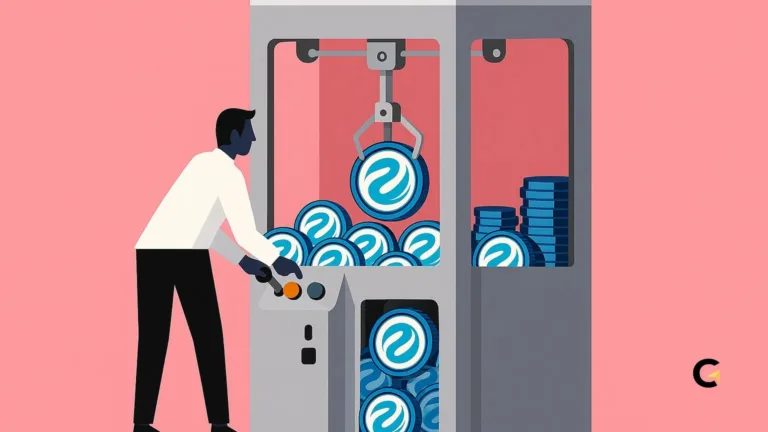Avoid These 5 Critical Mistakes When Tracking Bitcoin’s Price
Bitcoin is basically the rockstar of the crypto world—every move it makes turns heads. Its price chart is like a roller coaster, and for beginners, that wild ride is super tempting.
But if your eyes are only on the price, you might fall into traps that can cost you big time.
Key Takeaways You Actually Want to Remember
Hide- Understanding Bitcoin’s fundamentals matters way more than obsessing over daily price charts.
-
Emotions—especially FOMO (Fear of Missing Out)—can wreck your investment decisions if you’re not careful.
-
Dollar-Cost Averaging (DCA) helps smooth out your entry price and lowers risk over time.
-
Wallet security matters. Know the difference between hot and cold wallets, and don’t slack on protecting your assets.
-
Fees and liquidity are often overlooked, but they can eat into your profits more than you think—especially if you’re a frequent trader.
In this guide, we’re breaking down the five most common mistakes beginners make when watching Bitcoin’s price—and most importantly, how to avoid them. No fluff, just practical strategies to help you level up your crypto game.
1. Obsessing Over Daily Price Swings
Picture this: you just bought your first Bitcoin. Now you’re glued to your phone, checking the price every hour. When it dips a little, you freak out. When it goes up, you rush to buy more. Sounds familiar?
Here’s the problem:
Bitcoin’s price can swing wildly based on stuff like one random tweet from a billionaire, regulatory updates from another country, or just overall global market vibes.
Chasing those short-term movements is exhausting—and usually a fast-track to making impulsive, emotional decisions.
A lot of people panic-sell at the bottom and FOMO-buy at the peak. That’s not investing, that’s reacting.
What to do instead:
-
Try Dollar-Cost Averaging (DCA). That means you invest a fixed amount of money into Bitcoin on a regular schedule—weekly, bi-weekly, or monthly. It smooths out the highs and lows and takes the pressure off trying to time the market perfectly.
-
Think long-term. We’re talking 3 to 5 years minimum. Bitcoin’s magic unfolds over time, not in the next five hours.
2. Ignoring the Fundamentals
Here’s a truth bomb: Bitcoin isn’t just a price chart. There’s real tech, economics, and philosophy behind it.
And no, you don’t have to be a techie to get it—but ignoring the fundamentals is like buying a house just because the paint looks nice.
The stuff that actually drives Bitcoin’s value includes:
-
Institutional adoption (like banks or governments getting involved)
-
Protocol upgrades (such as the Lightning Network for faster, cheaper transactions)
-
Regulatory news (like when Bitcoin ETFs got approved in the U.S.)
Why it matters:
Many beginners don’t even know what Bitcoin’s whitepaper is. They skip over dev updates and only follow hype headlines.
But those “boring” fundamentals? They’re the reason Bitcoin is still standing strong after all these years.
Here’s how to level up your knowledge:
-
Read the original Bitcoin whitepaper. It’s surprisingly short and gives you the core idea of how Bitcoin works—limited supply, decentralization, and all that good stuff.
-
Follow trusted crypto news sources like CoinDesk, The Block, or CryptoSlate. Don’t rely on TikTok influencers yelling “BUY NOW!”
3. Letting Emotions & Hype Run the Show
Bitcoin’s pumping. Your socials are full of people flexing their gains. Your friend says he just made bank. You panic. You ape in. A few days later? Price tanks. You freak out again and sell at a loss.
Classic FOMO move.
Here’s the real issue:
Buying on hype and selling on panic is a recipe for disaster. Bitcoin is inherently volatile. If you don’t have a plan, your emotions will make all the calls—and the market doesn’t care how you feel.
Smart moves to stay grounded:
-
Write an actual investment plan. Not in your head—on paper or in a doc. Know when you’re buying, how much, when to sell, and what conditions trigger each move.
-
Use stop-loss orders to limit your downside. And only put a small slice (5–10%) of your portfolio into high-risk assets like Bitcoin. Keep the rest in more stable investments so you’re not gambling your whole net worth on every dip.
4. Ignoring Wallet Security
So, you bought Bitcoin and left it on the exchange because it’s easy and convenient. Big mistake. Exchanges can get hacked.
They can shut down. They can go bankrupt (yes, it’s happened—hello, FTX!). And if you don’t control your private keys, you don’t truly own your Bitcoin.
Here’s the nightmare scenario:
You lose your phone. Or your laptop crashes. And you didn’t back up your wallet’s seed phrase. That’s it. Your Bitcoin’s gone. Forever. There’s no “Forgot Password” button in crypto.
Types of wallets & what you need to know:
| Wallet Type | Pros | Cons |
|---|---|---|
| Hot Wallet | Easy to use, fast transactions | Vulnerable to hacks |
| Cold Wallet | Offline, super secure | Less convenient for everyday use |
How to protect your Bitcoin:
-
Store the bulk of your coins in a hardware wallet (cold wallet). Brands like Ledger and Trezor are widely trusted.
-
Back up your seed phrase (the recovery key for your wallet) in multiple physical locations. Don’t store it on Google Drive, your phone’s photo gallery, or anywhere online.
5. Underestimating Fees and Liquidity
You might think, “Eh, it’s just a small fee.” But if you’re doing frequent trades with small amounts, those fees stack up and eat into your profits over time.
And during periods of high volatility, liquidity can dry up, meaning you might not get the price you expected when placing an order.
Another hidden trap: slippage.
When markets are super volatile, your order can get filled at a way worse price than you wanted. That difference (called slippage) can be a silent killer for your gains.
Here’s how to stay efficient:
-
Compare trading fees across major exchanges like Binance, Coinbase, and Kraken. Choose one that aligns with your trading habits.
-
Use limit orders instead of market orders, so you control exactly what price you buy or sell at. Don’t just hit “Buy Now” in a frenzy when the market is jumping.
Final Thoughts: Don’t Be a Trend Follower Without a Map
Tracking Bitcoin’s price every day can be fun—it’s like watching a live video game. But if you don’t know the bigger picture, your strategy becomes like a ship with no compass. You’ll get tossed around by the waves of hype, and eventually, you’ll sink.
If you want to actually make it in the crypto space, here’s your playbook:
✅ Have a long-term strategy
✅ Manage your emotions
✅ Understand Bitcoin’s fundamentals
✅ Keep your assets secure
✅ Be mindful of fees and liquidity traps
Because at the end of the day, crypto isn’t just about who buys fastest—it’s about who survives longest. Take a breath, learn at your own pace, and build a plan that works for you.
Let the others chase the noise. You? You’re here for the long game.
Frequently Asked Questions (FAQs)
What is Dollar-Cost Averaging (DCA)?
DCA is a strategy where you invest a fixed amount of money into an asset at regular intervals—regardless of the price. Over time, this helps you get a more stable average price and reduces the risk of bad market timing. It’s like taking the emotion out of investing and putting the algorithm brain on.
Why should I even bother reading the Bitcoin whitepaper?
Because it’s the blueprint of Bitcoin. It explains the core principles—like how Bitcoin works, its supply cap (yup, only 21 million will ever exist), and the decentralized system behind it. Once you get this, you’ll stop treating Bitcoin like a meme coin and more like a revolution in digital money.
How do I choose a safe hardware wallet?
Stick to trusted brands like Ledger or Trezor. Always update the firmware, and most importantly—write down your seed phrase on something fireproof and offline. Seriously, don’t keep it in your phone’s notes app.
What’s the difference between a limit order and a market order?
A market order buys or sells instantly at the current price. Fast, but you might get hit with slippage.
A limit order lets you set the price you want—and only executes the trade when the market hits that price (or better). It gives you more control and peace of mind when things get chaotic.
How do I avoid getting tricked by hype-y influencers?
Double-check everything. Look up original sources like whitepapers, research reports, or official statements from regulators. Don’t just trust someone because they have cool editing skills on TikTok. Base your decisions on data—not drama.






